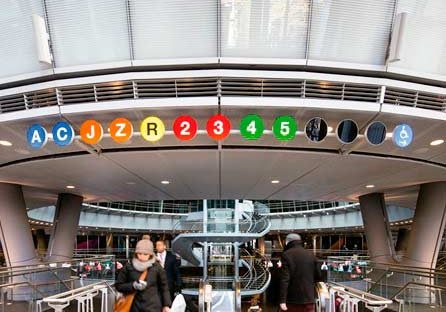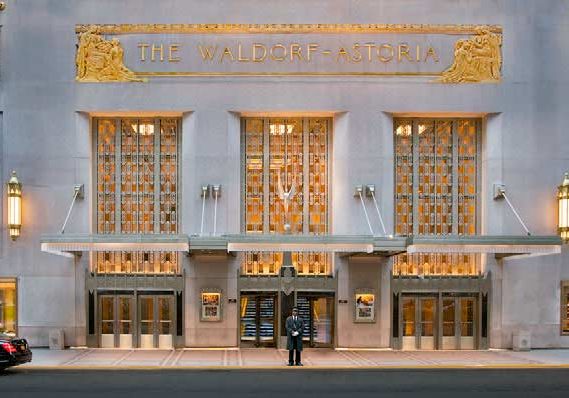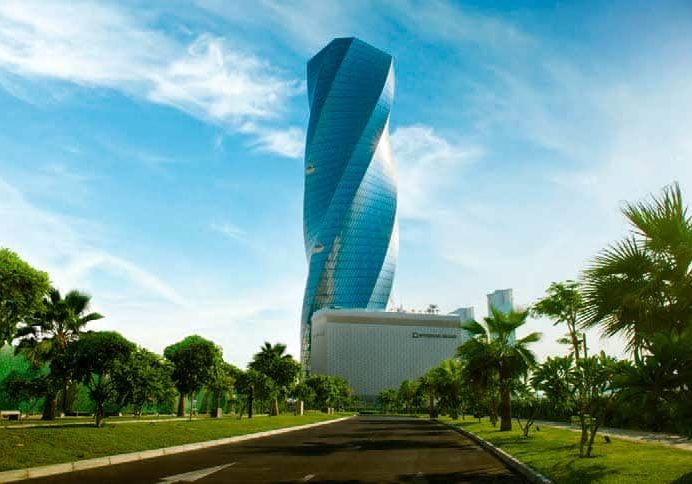Journey Back to Dignity
Mar 1, 2019

Vulcan, the world’s largest cast-iron statue in Birmingham, Alabama, has been lovingly restored to include an elevator that, for some, is the main attraction.
Eight-year-old Elijah and his grandfather visit Vulcan nearly every weekend if weather permits. Overlooking the city of Birmingham, Alabama, from its perch atop Red Mountain, the world’s largest cast-iron statue representing the Roman God of the Forge[1] is impressive, weighing 51 T and outfitted with an observation deck near the top from which one can take in amazing views.
The main attraction for Elijah, however, is the elevator, housed in a tower discretely located at the statue’s rear. Watching the counterweights and pulleys work at the top through tall, rectangular windows, Elijah shouted out facts about elevators: names of major OEMs, components and famous elevator innovators. Unlike your author, who fears heights, he frolicked back and forth on the see-through steel grate separating the elevator tower from Vulcan and the observation deck. “He gets upset when it’s raining and we can’t come,” his grandfather said. “He’s been fascinated by the elevator since he was very small, and that fascination has only increased. I think we might have a future elevator engineer or mechanic on our hands.”
Elijah and his grandfather are among the approximately 160,000 visitors (including 12,000 students on field trips) to Vulcan Park & Museum (VPM) each year. They come from all over the U.S. and more than 110 countries. A symbol of the city of Birmingham, which built its fortune on steel and iron-ore mining, VPM is an impressive attraction that includes walking and biking trails, a museum at the statue’s base that provides insight into Birmingham (and Vulcan) history through detailed displays and markers on the structure and along the trails. Over it all, Vulcan stands in command with his spearpoint held aloft.
The VPM of today is the culmination of a journey that, at times, saw the statue suffer various indignities. Its bare buttocks have inspired jokes and parody songs, and, in the late 1990s and early 2000s, the local radio show Beaner & Ken created a recurring Vulcan character who would crack jokes and give silly advice.
Vulcan was commissioned by local businessmen in 1903 to Italian sculptor Giuseppe Moretti for Birmingham’s entry for the 1904 St. Louis World’s Fair. After the fair, the statue was dismantled and returned to Birmingham. Its pieces lay next to railroad tracks for years before being eventually being reassembled and erected at the Alabama State Fairgrounds. At one point painted a flesh tone, the reassembled Vulcan was hodgepodge, with incorrectly installed arms and a spear that had gone missing on the trip from St. Louis. As a result, Vulcan ended up holding items to advertise various products including an ice cream cone, a Coca-Cola bottle and a Heinz pickle.[1]
Vulcan began his journey back to dignity in 1936 thanks to the New Deal’s Works Progress Administration (WPA), which partially funded a new park at the top of Red Mountain with a 126-ft.-tall sandstone pedestal on which the statue would stand. Making its debut in 1939, the park featured sandstone stairways, lush landscaping and a cascading fountain, but no elevator. A stairway was the only way to reach the open-air observation deck 100 ft. above.
The Kiwanis-sponsored WPA project added a new spearpoint for Vulcan to hold high in his right hand, and the statue was repainted in a more regal metallic finish. In 1946, Vulcan’s spear was replaced with a neon torch that glowed green, except for the 24 hr. following a traffic fatality, when it glowed red — part of an effort by the Junior Chamber of Commerce to promote road safety.[1]
In the late 1960s, plans for a US$1-million modernization began, bringing an external elevator to the structure in 1971. In line with trends of the time, this work resulted in doing away with the park’s naturalist look in favor of covering things — including the sandstone pedestal — with geometric structures and adding lots of paving. The fountain was also done away with. So, although accessibility was provided, VPM underwent an upgrade that could arguably be described as ugly.
It wouldn’t be that way next time.
In 1999, community leaders formed the nonprofit Vulcan Park Foundation, which raised the US$16 million needed for the restoration. The park closed in 1999 for five years. Careful thought went into the work, with an emphasis on restoring the naturalist look with new landscaping and on balancing historic preservation with accessibility. VPM Marketing and PR Coordinator LaShana Sorrell told ELEVATOR WORLD:
“From a preservation standpoint, it could be argued that building an elevator to the pedestal’s restored balcony would have an adverse effect on the historic nature of the structure since there was no elevator in it originally. But, project leaders agreed that an elevator was necessary to provide universal access to the balcony. The state Historic Preservation Office, whose blessing was required due to federal funding received for the project, also agreed, noting the pedestal had had an elevator at one time during its history, and that the new elevator structure could be removed without harming the integrity of the WPA structure.
“In consideration of preservation sensibilities, the new elevator tower was intentionally placed on the rear side of the pedestal so it could not be seen when viewing the statue from the front. To reduce the height of the elevator tower, the hoist cable mechanism was specially designed to be below ground.”
thyssenkrupp manufactured the equipment, and it is maintained by local firm Bagby Elevator Co. The system has the following features:
- Basement traction machine
- Two stops
- Travel distance of approximately 105 ft.
- Four 5/8-in. ropes that are approximately 600 ft. each
- 2:1 roping with an underslung car
- A cabin that is 6.1 ft. wide, 4.3 ft. deep and 7.4 ft. high
Balancing historic preservation with modern innovation resulted in creative compromise. For example, the original elevator tower was designed to be open air to enhance views from the cab. Due to Birmingham weather that can be extreme, this was determined to be impractical, and the tower was ultimately constructed with front- and rear-facing windows.
Environmental concerns promoted further modification. Sorrell said:
“Moisture from blowing rain entering through the upper doors posed a particular problem early on in the elevator’s operation. To address water issues, a sump pump was added in the below- ground mechanical room, materials were added to the upper doors to enhance the seal and the elevator was set to park at the upper level to minimize moisture dripping and pooling on mechanicals located on the top of the cab. A small air-conditioning unit was installed atop the cab to provide a more comfortable experience during the warm months, and as an additional safety measure should there be an entrapment.”
Compliant with all applicable safety codes, the elevator is inspected annually by a licensed state inspector. Since 2006, it has been maintained by Bagby, which implements a preventive maintenance program, performs an annual safety test and, every five years, a full-load test as required by code. “Bagby certainly appreciates this partnership with VPM and takes pride in knowing we service this unit,” Bagby Service Operations Manager James Hogan said. “We are happy to be associated with this significant structure in our city!”
The foundation continues to operate and maintain the museum and 10-acre park today. It undergoes continued improvement, including in spring 2018 when the new Kiwanis Centennial Park opened on the northern side. Sorrell observed:
“This area features new additions such as a fountain and stairway, while incorporating the original WPA sandstone walls and stairways. It connects the park with Birmingham’s Vulcan Trail. Several new visuals create additional historical context of the city to visitors, who are now able to see the entrance to Lone Pine Mine No. 3 (a former iron ore mine), the iron-ore seam in the cutaway of the mountain and Vulcan Trail, which was once the path of Birmingham’s Mineral Railroad.”
While Vulcan’s bare buttocks still shine over the suburb of Homewood and the jokes will probably always persist, this symbol of Birmingham is finally getting the respect it deserves as the centerpiece of a world-class park that’s accessible to all. The restored VPM is a testament to individuals’ “heartfelt love for Vulcan and his importance to Birmingham’s community identity.”
Reference
[1] wikipedia.org/wiki/Vulcan_statue
Get more of Elevator World. Sign up for our free e-newsletter.









